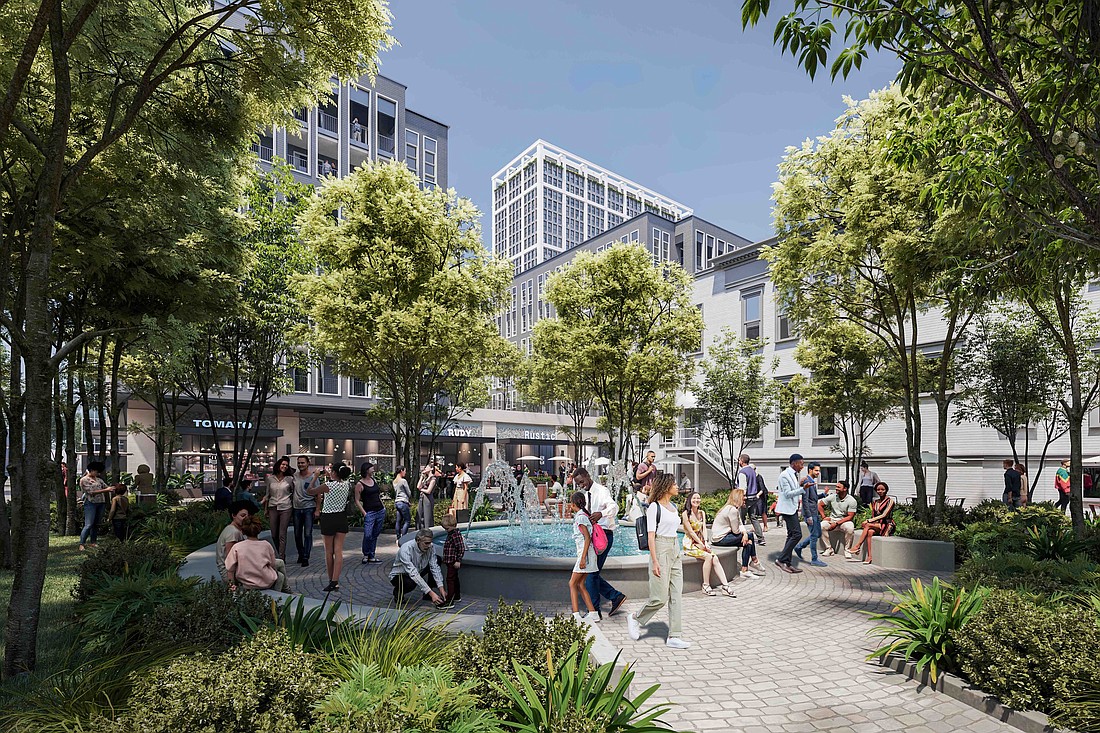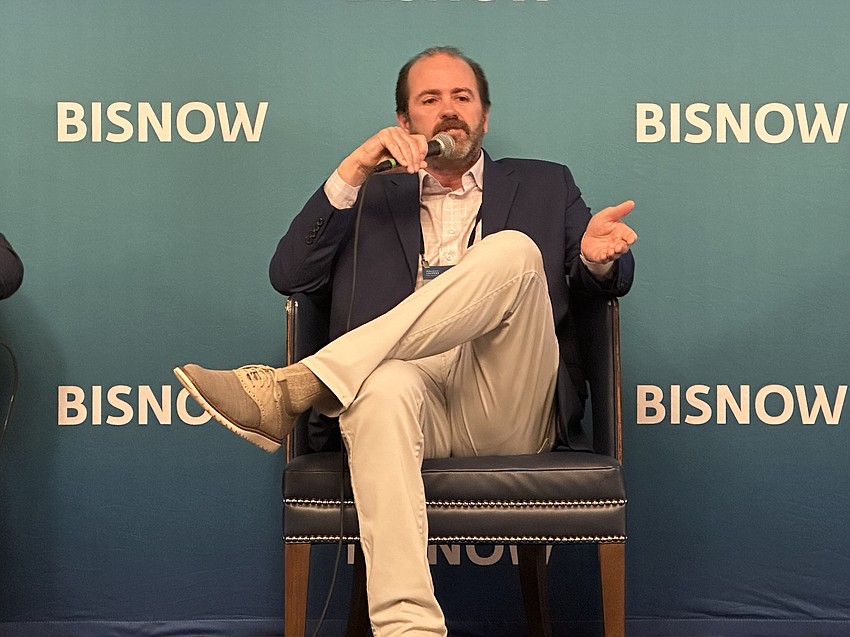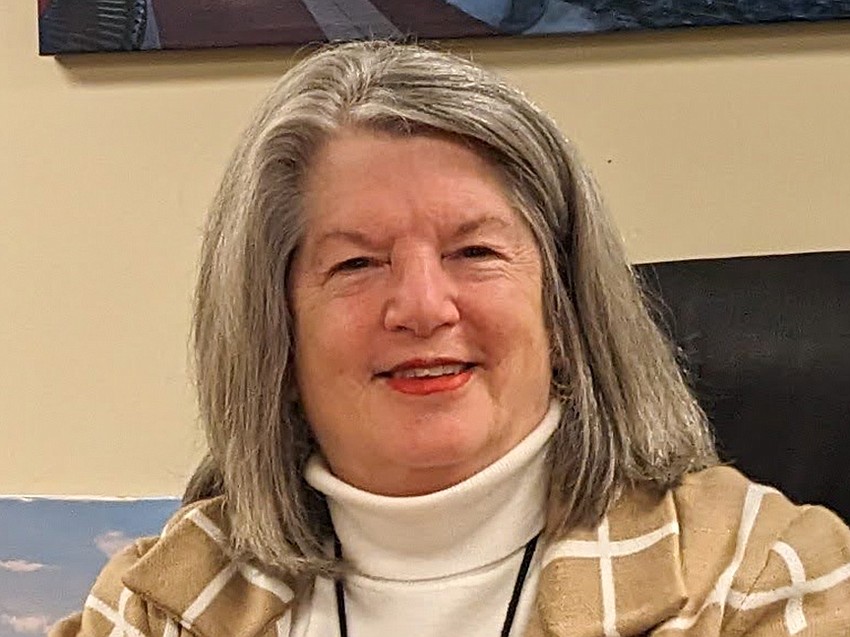
While Downtown observers have heard it for years, developers say this time, it’s real.
They say you won’t recognize Downtown in three to four – maybe seven – years. That it is at a tipping point in development and attracting residents and capital investment.
That Jacksonville is 20 years behind Tampa’s resurgence, but it’s time is now.
They say it’s real because they all are working together and that the city is, too. They used the words “collaboration” and “harmony.”
Another common word is “intentionality.”
They cited the need for “passion” for development, especially historic redevelopment with its unexpected discoveries after work starts.

Of course, they said, the key is to make a development deal “pencil” – or make financial sense to lenders and investors – and that is where the city and the Downtown Investment Authority factor into the equation by granting incentives.
A panel of five developers headlined the Bisnow “Urban Resurgence: Exploring Commercial Real Estate Developments in Downtown Jacksonville” discussion Feb. 29 at the Southbank Hotel Jacksonville Riverfront.
Four of them are active Downtown developers and the recipients of DIA incentive agreements.
Gunster shareholder Julia Holden Davis moderated the panel.
Bisnow, a Washington, D.C.-based digital media company that reports about the commercial real estate industry and sponsors events, hosted the “Jacksonville State of the Market Urban Resurgence, Investment Insights, & Infrastructure Innovations” event.
The Downtown panelists comprised Alex Sifakis, president of JWB Real Estate Capital; Bryan Moll, CEO of Gateway Jax; Billy Zeits, vice president of government affairs with Corner Lot; Matt Marshall, senior vice president of Rise: A Real Estate Company; and Ken Thomas, project executive of Catamount Constructors Inc.
The Downtown discussion was the first of three panels, with the others covering investment trends and community impact.
No ‘penciling’ without incentives
“Collaboration is how we’re going to overcome the unique challenges we face in Downtown Jacksonville,” said Zeits, with Jacksonville-based Corner Lot, a commercial and residential developer.
Among other suburban, Brooklyn and Springfield residential and commercial projects, Corner Lot proposes to renovate the historic Jones Bros. Furniture Co. building into 28 apartments and co-work office space.

That structure is in the Downtown North Core, which is north of the Duval County Courthouse and west of City Hall.
That area is the focus of much of the current Downtown development, including Gateway Jax.
“We’re all very collaborative, everyone is shooting for the same goal on both the public side and the private side,” said Moll, who leads Jacksonville-based Gateway Jax.
“In my experience with other cities, Jacksonville is unique in that respect, that everyone’s rowing in the same direction.”
Moll led the $4 billion Water Street Tampa downtown redevelopment and the Amazon HQ2 National Landing site in the Washington, D.C., area.
Gateway Jax proposes a $2 billion redevelopment of more than 20 blocks Downtown, starting with the $500 million Pearl Street District of about 1,100 apartments and 140 short-term rentals as well as retail stores and other amenities.
Gateway Jax will develop the property assembled by JWB Real Estate Capital, an investor and manager that is moving its headquarters from Deerwood to a Downtown building it bought.
“Projects don’t really pencil in Downtown without incentives currently,” Sifakis said.
“If you’re developing in downtown Tampa right now, you are getting rents to make projects pencil without incentives, and that market isn’t here yet,” he said.

“We’re so close in Jacksonville because of all the growth we’ve had and the work that the DIA has done and the work that so many developers and investors have done over the last 20 years,” in Downtown,” Sifakis said.
He said that means government incentives make the deals work now.
“That is critical and the DIA is an amazing partner,” he said.
Sifakis said he didn’t know if it would be “three years or five years or seven years” to create projects with enough amenities to draw renters who will pay rates high enough for developers that they won’t need government incentives to make a deal financially viable on its own.
“That’s what we all want to see, that’s what we all need to see. We’re all making bets up here believing that’s going to happen.”
‘A sense of place’ that drives rents
Panelists emphasized that Downtown developers are creating “a sense of place.”
To that point, they cited the Downtown area’s historic architecture, the city’s riverfront park system, the Emerald Trail pathway that will loop through neighborhoods, the progress in the Sports and Entertainment District, the proximity to the increasingly developed Brooklyn neighborhood, the plans for the Phoenix Arts + Innovation District in North Springfield and the focus on Historic Eastside near the sports complex.
They also noted the pending decision by the University of Florida to choose an expected Downtown area location for a graduate campus and the ongoing investments at the property surrounding EverBank Stadium.
Marshall agreed with panelists that some of the challenges Downtown include the need to amass several parcels to buy a site large enough for development along with environmental assessments and work with neighborhoods and historic districts.

Rise is working toward rebuilding its Rise Doro apartments, which were destroyed by a fire Jan. 28-29. No tenants had moved into the wood-frame apartments, which were under construction as the first residences in the sports district. No one was injured in the fire.
Marshall said that after the cause of the fire is determined, Rise will take the next steps with the insurance adjustment and work again with DIA, which had pledged incentives to the $65 million project that would have created 247 apartments.
Rise hopes to use the concrete parking garage and podium for rebuilding after assessing their structural integrity.
“Our opinion of Downtown hasn’t changed,” Marshall said. “When you look at the Sports and Entertainment District, it needs housing.”
Marshall said the collective city goal of 10,000 residents Downtown is reachable, with 7,700 now.
“When you look at the proposed developments of Gateway Jax and others, it’s possible they could hit 18,000,” he said.
“Once it hits that level, you’re going to see massive changes when it comes to retail and other entertainment venues, along with all of the things that Jacksonville is doing with their park system,” Marshall said.
“It’s pretty neat to be a part of if because you’re actively seeing it happen right in front of your eyes. If we were in Jacksonville 30 years ago, it wouldn’t. There just wasn’t that political push that there is today,” he said.
Thomas, with Catamount Constructors’ Tampa office, has been building industrial projects in Jacksonville, creating jobs for people who might want to live Downtown.
Marshall said with people moving Downtown, “you’re all going to see an amazing transformation take place.”
Saving historic structures
Sifakis focused on collaboration among the DIA, the Jacksonville Transportation Authority, the city and developers, referring to public-private partnerships. He also cited the Downtown Preservation and Revitalization Program, which the DIA says supports renovations to “unoccupied, underutilized and/or deteriorating historic buildings in Downtown Jacksonville, as well as qualified nonhistoric buildings.”
Sifakis said that has sparked the renovation of historic structures. Before such help, he said developers could make “no financial sense whatsoever to renovate historic buildings Downtown.”
“You’d be into a project for $10 million and it was worth $6 million,” he said. “Nobody does a deal planning on losing $4 million day one.”
Sifakis said developers asked DIA for answers, leading to the DPRP program that was created by a city ordinance in 2020.
“There’s been 20-plus projects that have been approved, and that’s 20-plus historic buildings that never would have been renovated. Some of them might have been torn down,” he said.
“Those historic buildings are so important to the fabric of our Downtown,” he said.
“That sense of place which drives rents are the ultimate financial success of our Downtown.”
Marshall noted that the city has put two large Downtown projects on city-owned land on hold.
DIA CEO Lori Boyer said in February that two of the biggest Downtown property developments on the Northbank – the proposed American Lions tower and The Hardwick at Ford on Bay– may be offered up for new redevelopment proposals because of the increased costs of construction and difficulties obtaining large-project financing.
“To see the city use their own property and entertain their competitive bid process … you’re going to get the best opportunity for redevelopment,” Marshall said.
He said the two developments likely were put on hold “while the larger interest rate environment works itself out” and construction costs stabilize.
“Once we hit that equilibrium those projects will come back.”
Also, several proposed historic or new projects owned by private investors are paused or in default on their incentives agreements. Those could return seeking new deals or with new owners.

Boyer said in the subsequent panel, “Investment Trends: Uncovering Opportunities and Risks in Jacksonville’s Commercial Real Estate Market,” that the commonly available incentive for Downtown apartment developers is the Recapture Enhanced Value Grant, a tax rebate.
“If you’re building multifamily in Downtown, you’re eligible,” she said.
She said the DPRP program is available only for structures defined as historic.
Boyer said that with rents flattening Downtown in 2023 and construction costs and interest rates rising, the DIA is bridging the gap with cash.
“We have been underwriting a number of completion grants that are actual cash payments at completion on top of that tax rebate,” she said.
“It’s directly tied to keeping things under construction,” Boyer said, and to ensure there are apartments in the pipeline.
Attracting retail interest
Moll said there will be a tipping point for investors, citing the Gateway Jax investment by St. Augustine-based DLP Capital.
DLP said in a September 2023 news release it is providing the majority of capital for the Jacksonville developments through its private evergreen funds that invest “in building thriving communities.”
DLP said that it will be the primary lender and will hold two-thirds of the equity with JWB owning the other third.
“What we saw in Tampa after Water Street … was that there was an immense amount of institutional capital that all of a sudden started to take notice,” Moll said.
“We are at that tipping point.”
Downtown also is attracting retail interest.
“Key retail anchors like grocery stores are really important,” Moll said.
“Frankly, I thought it might be more of a challenge,” he said.

“We’ve seen a lot of interest from both large-scale anchors (and) some really incredible regional or national restaurant groups. And I’m not talking about Applebee’s or Chili’s.”
Rather, he said, “really great restaurant groups” are interested in Jacksonville “because they have seen this story play out before.”
Moll said they have seen it “in Tampa, they’ve seen it in Nashville, they’ve seen it in Charlotte” where downtown drew thousands of residents as well as parks and public investment.
‘Placekeeping’ and housing the homeless
In the third panel of the event, Laura Phillips Edgecomb, principal of Downtown public spaces with the Jessie Ball duPont Fund, emphasized the city’s commitment to public spaces to create that “sense of place.”
“Downtown is for all 864 square miles of our city, not just for the 4 square miles of which it is,” Edgecomb said.
She is the executive on loan to the city to work with the Department of Parks, Recreation and Community Services to facilitate “the equitable activation of Downtown public spaces.”
She participated on the “Jacksonville’s Journey: Shaping a Community-Driven Future” panel.
“Right now there’s quite a push in Downtown for our public spaces,” noting that parks are under design or redesign along the riverfront, in LaVilla and other Downtown neighborhoods and within private developments.

Edgecomb said those spaces must be designed so that “anyone and everyone can walk into that space, have their own experience and be a positive one that makes them want to come back.”
She said fishing, kayaking and events are examples.
Also on the third panel, LISC Jacksonville Executive Director Irvin PeDro Cohen and Ability Housing President and CEO Shannon Nazworth said quality affordable housing requires “intentionality.”
Both are active in supporting Historic Eastside, also known as Outeast.
Jacksonville-based Ability Housing says on abilityhousing.org that it is a nationally recognized industry leader and one of a few nonprofits capable of developing high-quality affordable, community-inclusive rental housing. It can handle facets of multifamily development including project financing, development, community outreach, asset management and property management.

Nazworth said the mayor’s office and City Council “are really realizing they have to be intentional and create more affordable housing.
“How does that impact community development, of course it’s an essential component.”
“We’re an active participant in the Outeast efforts to revitalize that neighborhood while also enabling the people who have lived there for generations to remain and avail themselves of the equity that’s being grown,” she said.
“But you have to have quality affordable housing for them to be able to do that.”
While Downtown homelessness was not a specific topic, it often is cited as a reason for people not wanting to visit.
“Nobody wants to be homeless,” Nazworth said.
She said some of those without housing don’t know how to access health care or they find congregate shelter settings traumatic.
“Declining to go to a shelter does not mean they want to be homeless,” Nazworth said.
“They become homeless because we failed to build enough housing that is affordable, period,” she said.
“It’s a straight systems failure on the housing supply side.”
Nazworth said a thriving society needs to support housing.
“We have to be intentional – our favorite word of the day – about creating housing for everyone.”

LISC Jacksonville says on https://www.lisc.org/jacksonville/ that it works with residents and community-based organizations “to spark neighborhood transformation and build healthy, sustainable neighborhoods through lending, and grantmaking.”
“We employ a strategy where we call it ‘create placekeeping,’” Cohen said, to keep residents in their homes.
LISC says on the website that creative placekeeping “actively engages with community needs to safeguard the integrity of neighborhoods.”
“Through our Creative Placekeeping programs, LISC Jacksonville seeks to connect community members to the nature and parks around them while also preserving sacred sites across Northeast Florida. By safeguarding the historical significance of communities, fostering stewardship, and amplifying community voices, we strive to positively impact public decision-making.”
‘it’s getting cooler’
Zeits encourages area residents to support Downtown amenities, such as taking yoga classes in a park, visiting a farmers market and taking scooter rides.
“Part of our success is going to be getting people in here now before it’s cool, so we can all be a part of it because it’s getting cooler but it hasn’t hit the whole world.”
Sifakis said the Downtown transformation in the next two to four years “will change people’s opinion on Downtown Jacksonville.”
“I think everyone is going to be shocked.”